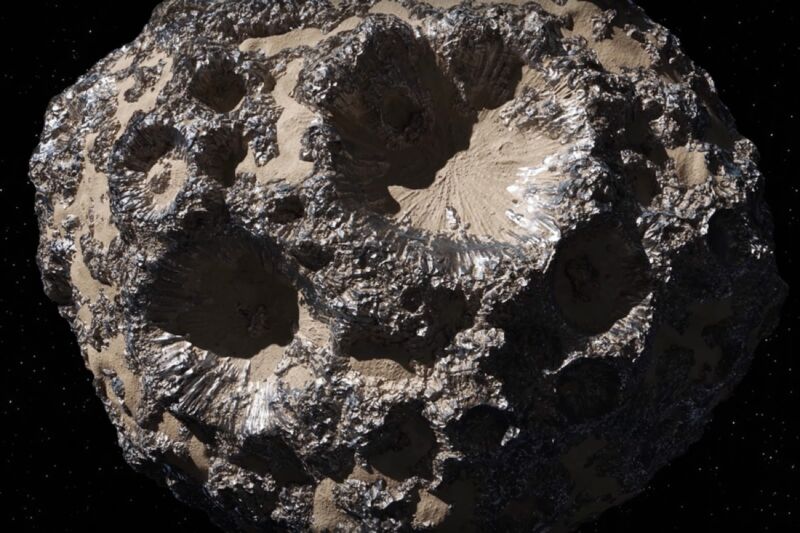Astronomers reveal the most detailed map of the asteroid Psyche yet

Enlarge / Astronomers at MIT and elsewhere have mapped the composition of asteroid Psyche, revealing a surface of metal, sand, and rock. (credit: NASA)
Astronomers have produced the most detailed map to date of the surface of 16-Psyche, an asteroid that scientists believe could hold clues to how planets formed in our Solar System. According to a paper published in the Journal of Geophysical Research, 16-Psyche has a highly varied surface of metal, sand, and rock that suggests its history could include metallic eruptions, as well as being hit by other celestial objects. The asteroid is the focus of NASA's Psyche mission, launching later this year.
As we've reported previously, 16-Psyche is an M-type asteroid (meaning it has high metallic content) orbiting the Sun in the main asteroid belt, with an unusual potato-like shape. The longstanding preferred hypothesis is that Psyche is the exposed metallic core of a protoplanet (planetesimal) from our Solar System's earliest days, with the crust and mantle stripped away by a collision (or multiple collisions) with other objects. In recent years, scientists concluded that the mass and density estimates aren't consistent with an entirely metallic remnant core. Rather, it's more likely a complex mix of metals and silicates.
Alternatively, the asteroid might once have been a parent body for a particular class of stony-iron meteorites, one that broke up and re-accreted into a mix of metal and silicate. Or perhaps it's an object like 1 Ceres, a dwarf planet in the asteroid belt between the orbits of Mars and Jupiter-except 16-Psyche may have experienced a period of iron volcanism while cooling, leaving highly enriched metals in those volcanic centers.
Read 7 remaining paragraphs | Comments